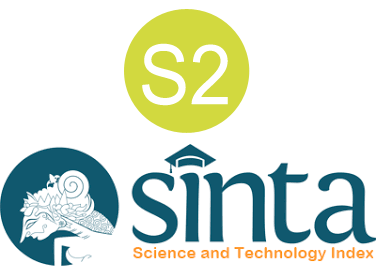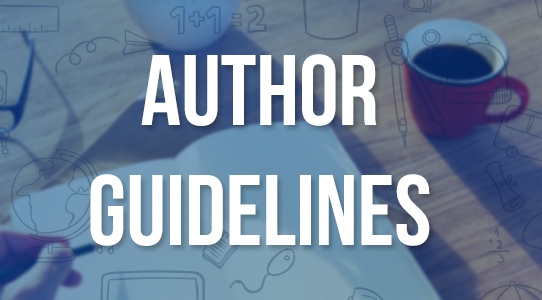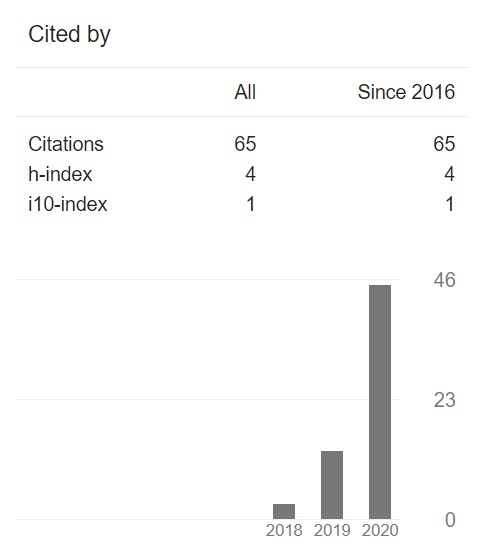Design of Physics Science for Early Childhood: Theoretical and Conceptual Framework of STEAM
DOI:
https://doi.org/10.37680/qalamuna.v17i1.6610Keywords:
Conceptual Framework, Early Childhood Education, STEAM, Physics EducationAbstract
Good problem-solving will occur if children have good thinking skills and scientific knowledge. This scientific knowledge and thinking skills can be built through learning that integrates the concepts of literacy and STEAM. Physics is one form of science that can be used to develop the concepts of literacy and STEAM. This article aims to introduce activity designs that carry the concepts of literacy and STEAM, which can help early childhood students integrate science, technology, engineering, art, and mathematics to achieve certain targets. A more detailed concept of content that carries the concepts of literacy and STEAM is developed as a recommendation to education implementers. This concept design is based on the scene setting for early childhood. This study applies the 'most appropriate framework synthesis' approach, supported by interviews, in-depth observations, and literature reviews, to strengthen the conceptual framework in this study. The results of this study are a conceptual framework that refers to STEAM education but is more focused on the subject of physics. With a clear and completely structured conceptual framework, it is hoped that learning activities with the STEAM approach can run optimally and help stimulate cognitive, language, psychomotor, and social-emotional understanding in early childhood through the five STEAM disciplines.
Downloads
References
Ahmed, E. S. A. H., Alharbi, S. M., & Elfeky, A. I. (2022). Effectiveness of a proposed training program in developing twenty-first-century skills and creative teaching skills among female student teachers, specializing in early childhood. Journal of Positive School Psychology, 4316–4330.
Ahn, H. J. (2005). Teachers’ discussions of emotion in child care centers. Early Childhood Education Journal, 32, 237–242.
Aktürk, A. A., & Demircan, O. (2017). A review of studies on STEM and STEAM education in early childhood. Ahi Evran Üniversitesi Kırşehir Eğitim Fakültesi Dergisi (KEFAD), 18(2), 757–776.
Alismail, H. A. (2023). Teachers’ perspectives on utilizing distance learning to support 21st-century skill attainment for K-3 elementary students during the COVID-19 pandemic era. Heliyon, 9(9).
Al-Mutawah, M. A., Thomas, R., Preji, N., Alghazo, Y. M., & Mahmoud, E. Y. (2022). Theoretical and Conceptual Framework for A STEAM-Based Integrated Curriculum. Journal of Positive School Psychology, 6(5).
Areljung, S., Bäckström, L., & Grenemark, E. (2023). Young children’s learning in physics: A (dis-) trustful play with gravity, friction, and counterforces? European Early Childhood Education Research Journal, 31(4), 660–672.
Asunda, P. A. (2014). A conceptual framework for STEM integration into the curriculum through career and technical education. Journal of STEM Teacher Education, 49(1), 4.
Atasoy, I., Özdemir, S. Ç., & Evli, M. (2023). Relationship between individual innovativeness and 21st century skills of nursing and midwifery students: A cross-sectional study. Nurse Education Today, 126, 105830.
Beringer, J. (2007). Application of problem-based learning through research investigation. Journal of Geography in Higher Education, 31(3), 445–457.
Berman, R. A. (2014). Setting the narrative scene: How children begin to tell a story. In Children’s language (pp. 1–30). Psychology Press.
Black, M. M., Walker, S. P., Fernald, L. C. H., Andersen, C. T., DiGirolamo, A. M., Lu, C., McCoy, D. C., Fink, G., Shawar, Y. R., & Shiffman, J. (2017). Early childhood development coming of age: Science through the life course. The Lancet, 389(10064), 77–90.
Boyce, C., & Neale, P. (2006). Conducting in-depth interviews: A guide for designing and conducting in-depth interviews for evaluation input (Vol. 2). Pathfinder International, Watertown, MA.
Briones, L., Contreras, D., Otero, G., & Soto, G. (2021). Determinants of early childhood stimulation: Evidence using panel data from Chile. Early Childhood Research Quarterly, 57, 202–214.
Bybee, R. W. (2013). The case for STEM education: Challenges and opportunities. National Science Teachers Association.
Carroll, C., Booth, A., & Cooper, K. (2011). A worked example of" best fit" framework synthesis: A systematic review of views concerning taking some potential chemopreventive agents. BMC Medical Research Methodology, 11, 1–9.
Carroll, C., Booth, A., Leaviss, J., & Rick, J. (2013). “Best fit” framework synthesis: Refining the method. BMC Medical Research Methodology, 13, 1–16.
Cavadas, B., Correia, M., Mestrinho, N., & Santos, R. (2019). CreativeLab_Sci&Math: Work dynamics and pedagogical integration in science and mathematics. Revista Interacções, 15(50), 6–22.
Chan, Z. C. Y. (2013). Exploring creativity and critical thinking in traditional and innovative problem‐based learning groups. Journal of Clinical Nursing, 22(15–16), 2298–2307.
Chen, C. J. (2011). Physics of solar energy. John Wiley & Sons.
Clements, D. H., & Sarama, J. (2002). Early childhood corner: The role of technology in early childhood learning. Teaching Children Mathematics, 8(6), 340–343.
De La Harpe, B., Radloff, A., & Wyber, J. (2000). Quality and generic (professional) skills. Quality in Higher Education, 6(3), 231–243.
DeCapua, A., & Tian, L. (2015). Developing the communication skills of early childhood teacher candidates: The case of advice. Eurasian Journal of Applied Linguistics, 1(2), 57–75.
DeJarnette, N. K. (2018a). Early childhood STEAM: Reflections from a year of STEAM initiatives implemented in a high-needs primary school. Education, 139(2), 96–112.
DeJarnette, N. K. (2018b). Implementing STEAM in the early childhood classroom. European Journal of STEM Education, 3(3), 18.
Denham, S. A. (2003). Social and emotional learning, early childhood. In Encyclopedia of primary prevention and health promotion (pp. 1009–1018). Springer.
Denham, S. A., Bassett, H. H., & Zinsser, K. (2012). Early childhood teachers as socializers of young children’s emotional competence. Early Childhood Education Journal, 40, 137–143.
Ersoy, E. (2014). The effects of the problem-based learning method in higher education on creative thinking. Procedia-Social and Behavioral Sciences, 116, 3494–3498.
Fitria, Y., Helsa, Y., Nirwana, H., & Zulkarnaini, A. P. (2018). The integration of science and math. Journal of Physics: Conference Series, 1088(1), 12041.
Gamette, M. (2020). Improving forensic science integration: A Director’s perspective. In Forensic Science International: Synergy (Vol. 2, pp. 183–186). Elsevier.
Glezou, K. V. (2020). Fostering computational thinking and creativity in early childhood education: Play-learn-construct-program-collaborate. In Mobile learning applications in early childhood education (pp. 324–347). IGI Global.
Halliday, D., Resnick, R., & Walker, J. (2013). Fundamentals of physics. John Wiley & Sons.
Haloho, O. (2022). Strategi Guru dalam Pengembangan Logika Anak Usia Dini. Ideas: Jurnal Pendidikan, Sosial, Dan Budaya, 8(4), 1429–1434.
Herro, D., Quigley, C., & Cian, H. (2019). The challenges of STEAM instruction: Lessons from the field. Action in Teacher Education, 41(2), 172–190.
Kannan, N., & Vakeesan, D. (2016). Solar energy for the future world review. Renewable and Sustainable Energy Reviews, 62, 1092–1105.
Kelley, T. R., & Knowles, J. G. (2016). A conceptual framework for integrated STEM education. International Journal of STEM Education, 3, 1–11.
Kennedy, T. J., & Odell, M. R. L. (2014). Engaging students in STEM education. Science Education International, 25(3), 246–258.
Kermani, H., & Aldemir, J. (2015). Preparing children for success: Integrating science, math, and technology in early childhood classrooms. Early Child Development and Care, 185(9), 1504–1527.
Kerr, J., Chou, M., Ellis, R., & Kelleher, C. (2013). Setting the scene: Scaffolding stories to benefit middle school students learning to program. 2013 IEEE Symposium on Visual Languages and Human Centric Computing, 95–98.
Kol, S., & Tunçeli, H. İ. (2022). Examination of 21st-Century Skills in Early Childhood in Terms of Different Variables. Sakarya University Journal of Education, 12(3), 813–832.
Kumar, A., & Sharma, A. (2023). Observation Method: A Review Study. Library Philosophy & Practice.
Leggett, N. (2023). Creative and Critical Thinking in Early Childhood. In Integrated Education and Learning (pp. 109–127). Springer.
Lilly, F. R. (2014). Creativity in early childhood. Encyclopedia of Primary Prevention and Health Promotion, 598–609.
Lindeman, K. W., Jabot, M., & Berkley, M. T. (2014). The role of STEM (or STEAM) in the early childhood setting. In Learning across the early childhood curriculum (Vol. 17, pp. 95–114). Emerald Group Publishing Limited.
Linder, S. M., Powers-Costello, B., & Stegelin, D. A. (2011). Mathematics in early childhood: Research-based rationale and practical strategies. Early Childhood Education Journal, 39, 29–37.
Mayeux, L., & Cillessen, A. H. N. (2003). Development of social problem solving in early childhood: Stability, change, and associations with social competence. The Journal of Genetic Psychology, 164(2), 153–173.
Nayem, S. Z., & Hossain, M. S. (2023). Conceptual Framework for STEM Education: A Thematic Analysis in Bangladesh Perspective. American Journal of Multidisciplinary Research and Innovation, 2(2), 40–46.
Ng, A., Kewalramani, S., & Kidman, G. (2022). Integrating and navigating STEAM (inSTEAM) in early childhood education: An integrative review and inSTEAM conceptual framework. Eurasia Journal of Mathematics, Science and Technology Education, 18(7), em2133.
Nikkola, T., Kangas, J., & Reunamo, J. (2024). Children’s creative participation as a precursor of 21st-century skills in Finnish early childhood education and care context. Learning and Individual Differences, 111, 102437.
Pangarti, W. M., & Yaswinda, Y. (2023). Pembelajaran Berbasis Multimedia untuk Meningkatkan Kemampuan Kognitif Anak Usia Dini. Jurnal Obsesi: Jurnal Pendidikan Anak Usia Dini, 7(3), 2589–2599.
Patton, M. Q. (2014). Qualitative research & evaluation methods: Integrating theory and practice. Sage Publications.
Pem, D. (2015). Factors affecting early childhood growth and development: Golden 1000 days. Adv Practice Nurs, 1(101), 347–2573.
Perignat, E., & Katz-Buonincontro, J. (2019). STEAM in practice and research: An integrative literature review. Thinking Skills and Creativity, 31, 31–43.
Pliogou, V., Kountouroudi, A., Kamperidou, I., Coumpa, A.-I., & Coumpa, M.-L. (2017). Children’s Curiosity Finds Solutions for Energy: A Project for Renewable and Non-Renewable Energy Sources for Early Childhood. Multilingual Academic Journal of Education and Social Sciences, 5(1). https://doi.org/10.46886/MAJESS/v5-i1/7350
Prastyaningrum, I., Kholifah, U., Afifah, D. R., & Afifah, S. N. (2023). Colour Ball Based on Microcontroller as an Educational Game Tool for Early Childhood Learning. Jurnal Obsesi: Jurnal Pendidikan Anak Usia Dini, 7(5), 6249–6258.
Quigley, C. F., Herro, D., & Jamil, F. M. (2017). Developing a conceptual model of STEAM teaching practices. School Science and Mathematics, 117(1–2), 1–12.
Radziwill, N. M., Benton, M. C., & Moellers, C. (2015). From STEM to STEAM: Reframing what it means to learn. The STEAM Journal, 2(1), 3.
Roshid, M. M., & Haider, M. Z. (2024). Teaching 21st-century skills in rural secondary schools: From theory to practice. Heliyon, 10(9).
Silva-Hormazábal, M., & Alsina, Á. (2023). Exploring the Impact of Integrated STEAM Education in Early Childhood and Primary Education Teachers. Education Sciences, 13(8), 842.
Smith, B. A., & Cline, J. E. (2016). Zebras and jaguars, oh my! Integrating science and engineering standards with art during prekindergarten block time. Journal of STEM Arts, Crafts, and Constructions, 1(1), 6.
Sujarwanto, E., & Sanjaya, I. G. M. (2021). A conceptual framework of STEM education based on the Indonesian Curriculum. Journal of Physics: Conference Series, 1760(1), 12022.
Sylva, K., Sammons, P., Melhuish, E., Siraj, I., & Taggart, B. (2020). Developing 21st century skills in early childhood: The contribution of process quality to self-regulation and pro-social behaviour. Zeitschrift Für Erziehungswissenschaft, 23(3), 465–484.
Twigg, D., & Garvis, S. (2010). Exploring art in early childhood education. The International Journal of the Arts in Society, 5(2), 193–204.
Üret, A., & Ceylan, R. (2021). Exploring the effectiveness of STEM education on the creativity of 5-year-old kindergarten children. European Early Childhood Education Research Journal, 29(6), 842–855.
Watson, E. (2020). Education: The potential impact of social media and hashtag ideology on the classroom. Research in Social Sciences and Technology, 5(2), 40–56.
Weber, A. M., & Greiff, S. (2023). ICT skills in deploying 21st century skills: A (cognitive) developmental perspective through early childhood. Applied Sciences, 13(7), 4615.
White, D. W. (2014). What is STEM education, and why is it important? Florida Association of Teacher Educators Journal, 1(14), 1–9.
Downloads
Published
How to Cite
Issue
Section
License
Copyright (c) 2025 Ihtiari Prastyaningrum, Alisa Alfina, Swasti Maharani, Dewanta Arya Nugraha

This work is licensed under a Creative Commons Attribution-ShareAlike 4.0 International License.
Authors who submit manuscript retain its copyright and grant publisher right of first publication licensed under a Creative Commons Attribution-ShareAlike 4.0 International License (CC BY-SA 4.0) that allows others to access (search, read, download, and cite), share (copy and redistribute the material in any medium or format) and adapt (remix, transform, and build upon any material) the work for any lawful purpose, even commercially with an acknowledgement of the work's authorship and initial publication in Qalamuna: Jurnal Pendidikan, Sosial, dan Agama.












